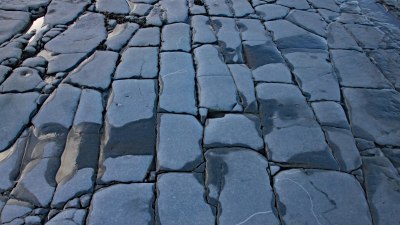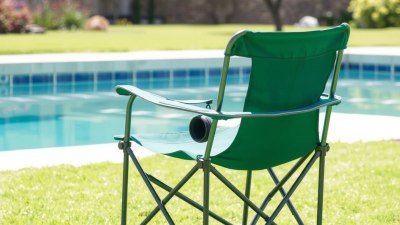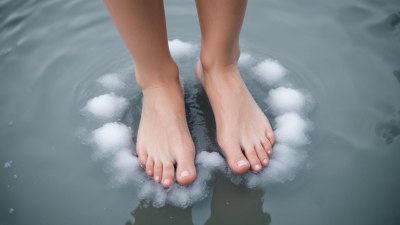What Happens When You Underestimate How Cold Stone Floors Can Get
Discover the effects of cold stone floors on comfort and health, and learn how to mitigate the chill.

When it comes to flooring choices, aesthetics and durability often take precedence. However, one aspect that many homeowners may overlook is how cold stone floors can become, particularly in chillier climates or seasons. This underestimation can lead to a range of uncomfortable experiences, from simply being chilly to more significant health implications. The following sections will explore the various consequences of underestimating the coldness of stone floors, effective solutions to combat the chill, and the benefits of choosing warmer flooring alternatives.
The Nature of Stone Floors
Stone floors, whether made of marble, granite, limestone, or slate, are admired for their elegance and robustness. However, they have an inherent property that makes them particularly cold to the touch: their heat conduction. Stone is an excellent conductor of heat, meaning it can easily absorb and retain cold from the environment, especially in a poorly insulated home. In winter months, or in cooler climates, this can create an unwelcoming atmosphere in the home. Many people may choose stone flooring for its beauty and longevity without considering its thermal conductivity and the effect it will have on their experience at home.
Comfort Levels
The first and most immediate impact of cold stone floors is on comfort levels. Standing on these surfaces during colder seasons can be jarring, as the chill seeps into your feet, creating feelings of discomfort. Prolonged exposure to cold floors can lead to a dislike of certain areas of the home, especially if those areas are frequently visited for activities like cooking or relaxing. Homeowners might initially justify the aesthetic appeal of stone floors, but the daily discomfort can quickly override those initial attractions, leading to a sense of regret about the flooring choice.
Health Implications
Beyond discomfort, there are various health implications associated with underestimating how cold stone floors can get. For those with sensitive feet, conditions like Raynaud’s phenomenon could be exacerbated, leading to numbness and tingling in the toes and feet. Extended periods of standing on cold surfaces can also contribute to joint pain, particularly in the knees and hips, as the body must work harder to maintain warmth. Moreover, cold environments can lead to a decrease in overall body temperature, potentially resulting in a sluggish immune response. This could leave residents more susceptible to colds and other illnesses, especially during the winter months when such conditions are already prevalent.
Environmental Impact
When we think about how our choices affect our immediate environment, cold stone floors have an indirect environmental impact. Homes with cold flooring may require additional heating to combat the chill, leading to increased energy usage. This not only affects the utility bills but also adds to carbon emissions, particularly if your home relies on fossil fuels for heating. Thus, the decision to install stone flooring may have broader implications for resource consumption and contribute to larger environmental issues.
Mitigating the Chill
Fortunately, there are several ways to mitigate the coldness of stone floors, allowing homeowners to enjoy their beauty without sacrificing comfort. One of the most effective solutions is installing radiant floor heating systems. This system involves placing warm water tubes or electric heating mats underneath the flooring, which evenly distributes heat across the stone surface. While this option can be costly, it presents a long-term investment that enhances comfort and energy efficiency.
Another effective approach is using area rugs or carpets. Rugs not only provide cushioning against the cold but also introduce warmth and color into a space. Strategically placing rugs in high-traffic areas can significantly improve comfort levels without compromising the appeal of stone floors. Additionally, these coverings can aid in reducing noise, contributing to a cozier environment.
Choosing Alternative Flooring Solutions
If the coldness of stone floors is a significant concern, it may be worth considering alternative flooring options altogether. Warm wood floors, for instance, offer a visually appealing and comfortable alternative. Wood has natural insulating properties and can assist in maintaining a more consistent and comfortable temperature throughout the year. Additionally, laminate or luxury vinyl tile (LVT) options are also available. These materials can mimic the appearance of stone while providing more insulation and warmth underfoot.
Considerations for Installation
When choosing flooring, it's essential to consider the specific installation requirements. For stone floors, proper installation plays a crucial role in preventing heat loss and ensuring comfort. A professional can provide guidance on installing insulation beneath the stone to minimize cold seepage. Furthermore, ensuring that the space is adequately sealed can prevent cold drafts that compound the chill from the flooring. Frequent maintenance, like resealing natural stone to maintain its integrity, can also extend the life of the flooring and sustain its appearance.
Seasonal Maintenance Tips
As seasons change, so should your approach to maintaining comfort with your flooring. During winter, consider employing local heating systems like space heaters in areas with particularly cold stone. Ensuring that windows and doors are properly sealed will help avoid additional cold from entering the home. Regularly checking and adjusting your thermostat can also counteract the chill that stone floors can bring. A helpful tip is to keep slippers or cozy socks near entry points to encourage warmth when moving throughout the house.
Adaptability and Response
Being adaptable in approach and responsive to changing temperatures can enhance comfort in homes with stone floors. Homeowners should also encourage warmth through lifestyle changes, such as taking advantage of the warm sun by opening curtains during the day, allowing sunlight to naturally warm stone surfaces. Engaging in more physical activities can also naturally help maintain body temperature, making the colder surfaces feel less intimidating.
In conclusion, underestimating how cold stone floors can get may lead to discomfort, potential health risks, and increased environmental impact through higher energy consumption. By understanding the properties of stone flooring and taking proactive measures to mitigate coldness, homeowners can enjoy the beauty and durability of stone without succumbing to the adverse effects of its temperature. Whether through the installation of radiant heating, utilizing area rugs, or considering alternative flooring materials, there are numerous strategies to effectively counteract the chill. Overall, awareness and adaptation can lead to a harmonious balance between aesthetics and comfort.











